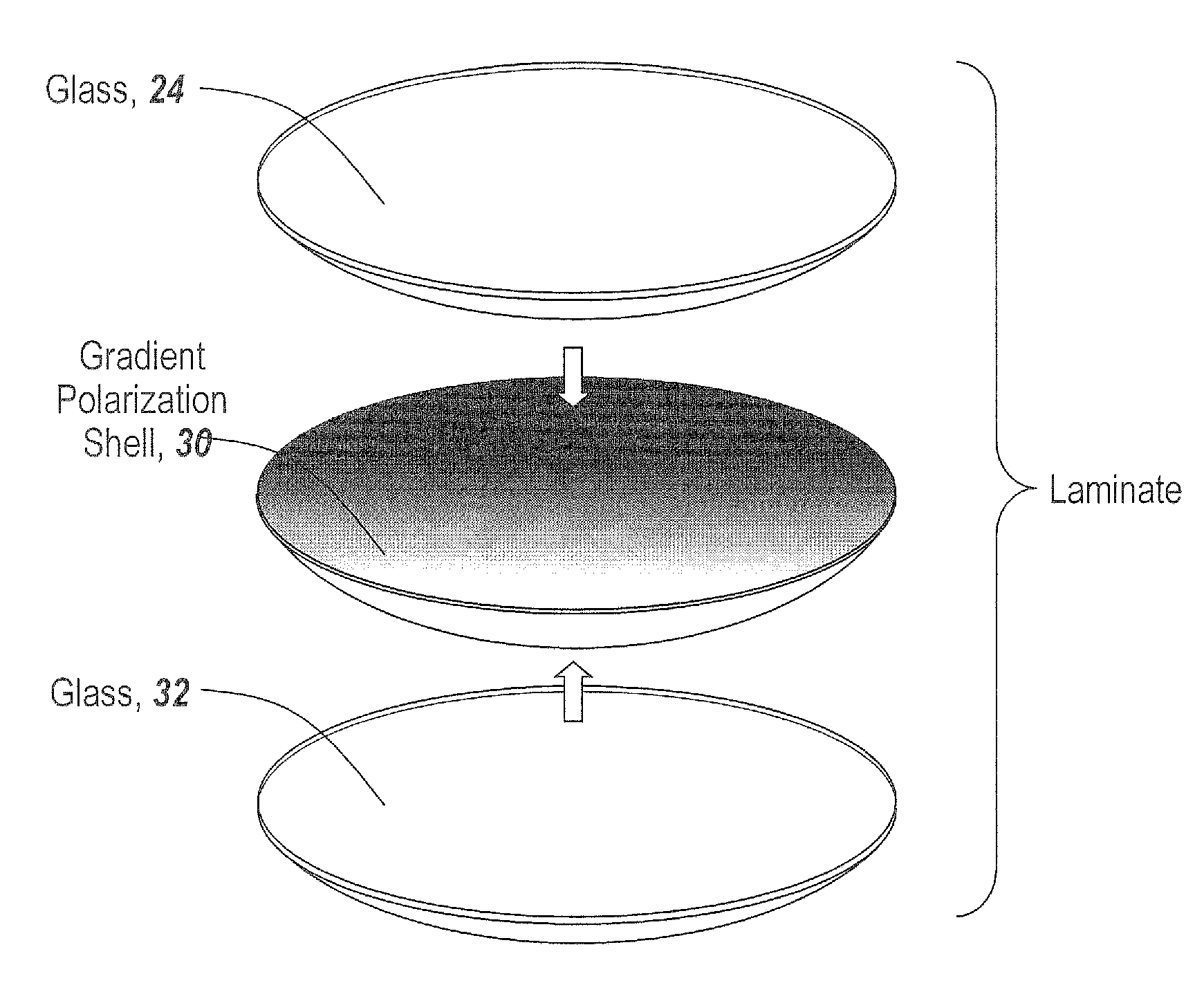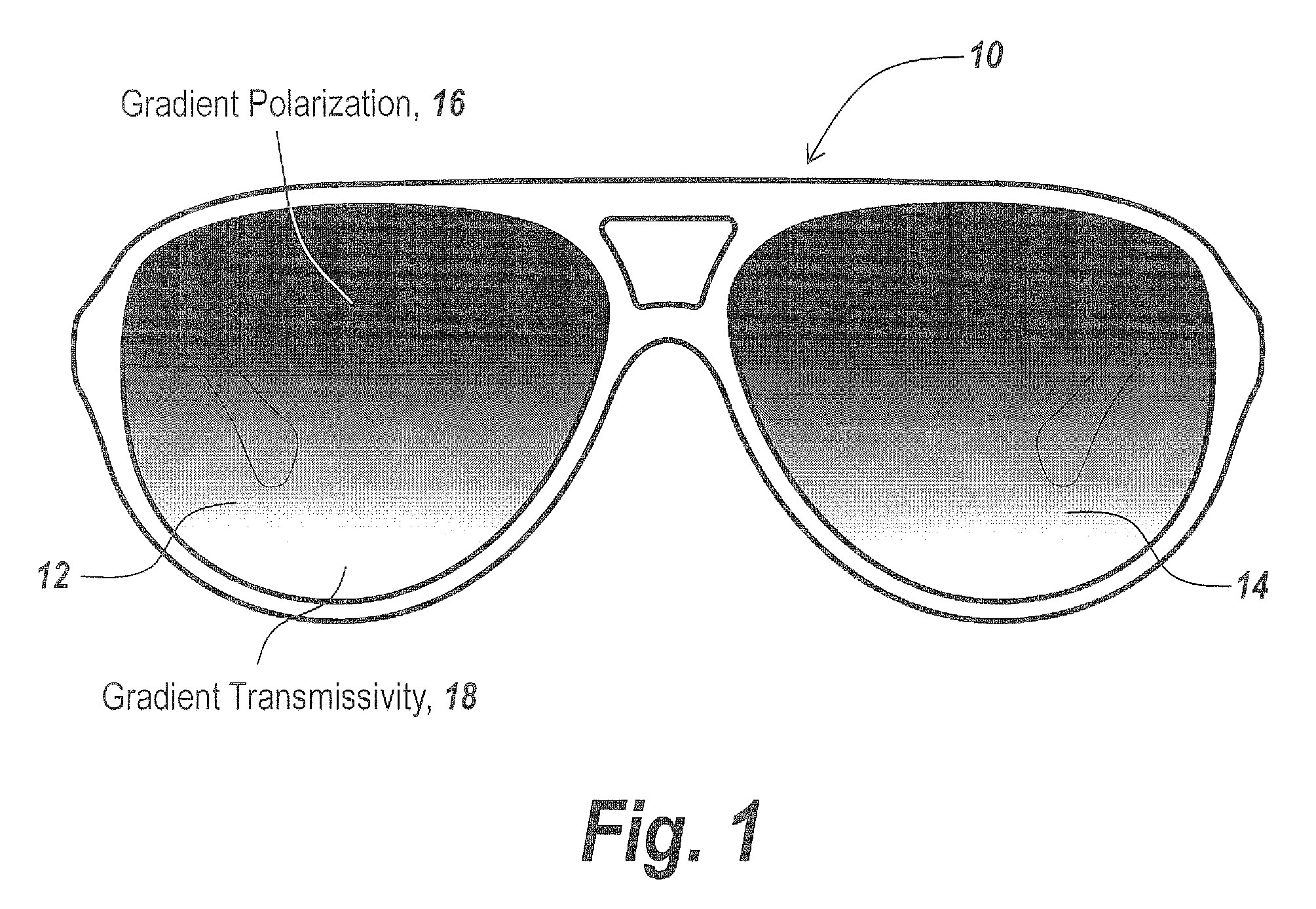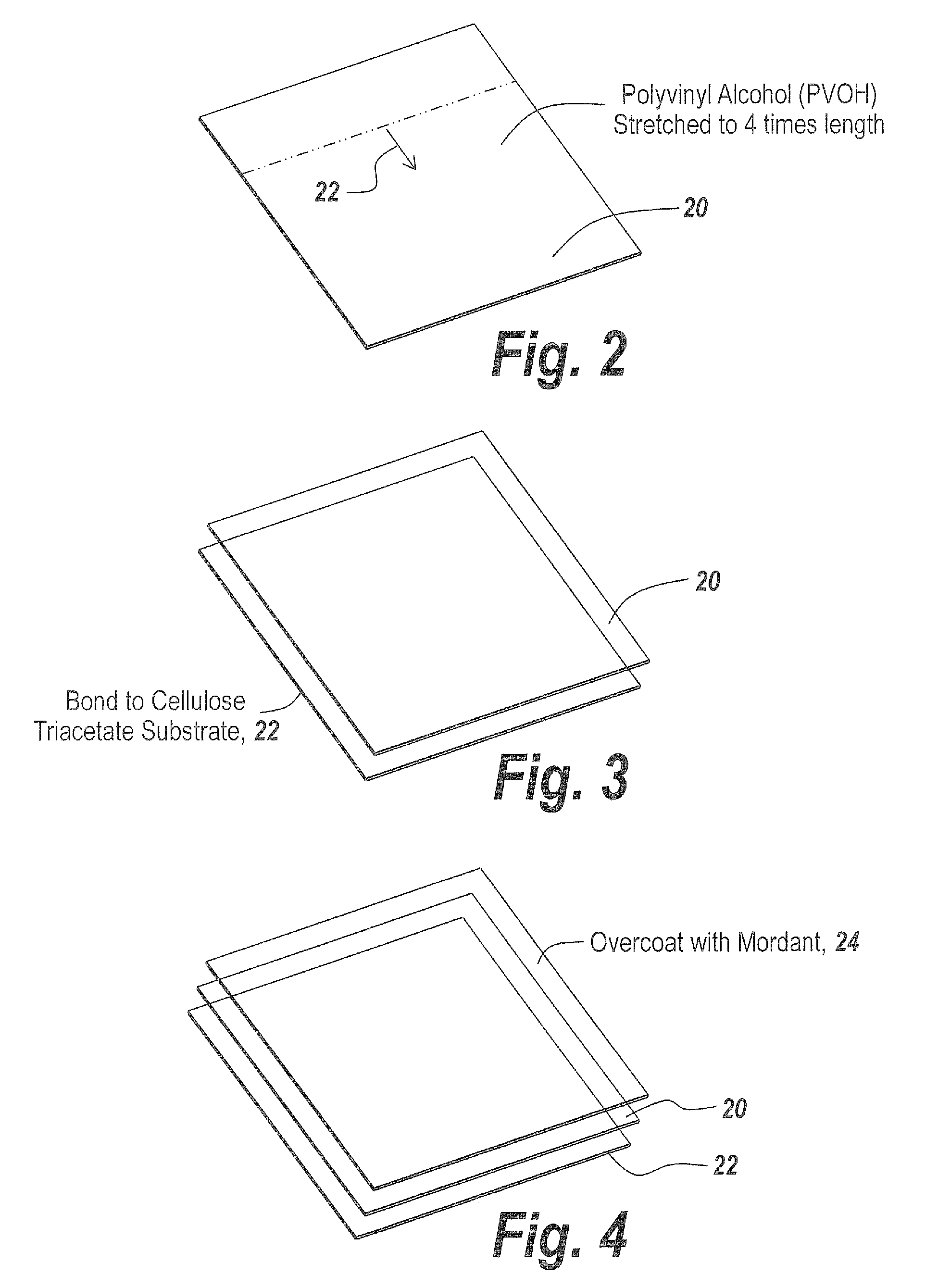Method and apparatus for forming sunglass lenses with a predetermined gradient
a technology of gradient and sunglass lens, applied in the field of sunglass lens manufacturing, can solve the problems of difficult to achieve the type of technique and provide a true gradient polarized lens
- Summary
- Abstract
- Description
- Claims
- Application Information
AI Technical Summary
Benefits of technology
Problems solved by technology
Method used
Image
Examples
Embodiment Construction
[0028]Referring to now to FIG. 1, a pair of sunglasses 10 is shown having lenses 12 and 14 with the gradient shading illustrating gradient polarization 16 and concomitant gradient transmissivity 18. Here it can be seen that the gradient polarization is such that the upper portions of lenses 12 and 14 are heavily polarized at the top and lightly polarized at the bottom, whereas concomitantly the transmissivity of lenses 12 and 14 is greater at the bottom as compared to the top. In one embodiment the polarization percentage at the top is close to 100%, whereas at the bottom it is close to 0.04%.
[0029]The purpose of the subject technique to be able to manufacture a pair of sunglasses with a gradient polarization characteristic. In order to do so in one embodiment an inkjet process is employed. As described in FIG. 2, a polyvinyl alcohol sheet 20 is stretched to four times its length as illustrated by arrow 22 so as to provide an oriented sheet.
[0030]Referring to FIG. 3, sheet 20 is pro...
PUM
| Property | Measurement | Unit |
|---|---|---|
| optical polarization | aaaaa | aaaaa |
| density | aaaaa | aaaaa |
| optical gradient | aaaaa | aaaaa |
Abstract
Description
Claims
Application Information
 Login to View More
Login to View More - R&D
- Intellectual Property
- Life Sciences
- Materials
- Tech Scout
- Unparalleled Data Quality
- Higher Quality Content
- 60% Fewer Hallucinations
Browse by: Latest US Patents, China's latest patents, Technical Efficacy Thesaurus, Application Domain, Technology Topic, Popular Technical Reports.
© 2025 PatSnap. All rights reserved.Legal|Privacy policy|Modern Slavery Act Transparency Statement|Sitemap|About US| Contact US: help@patsnap.com



